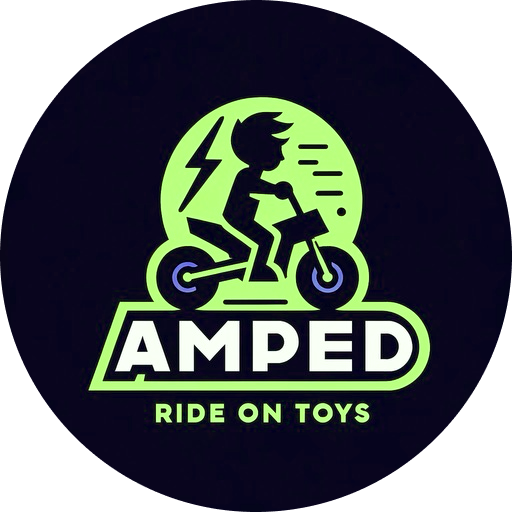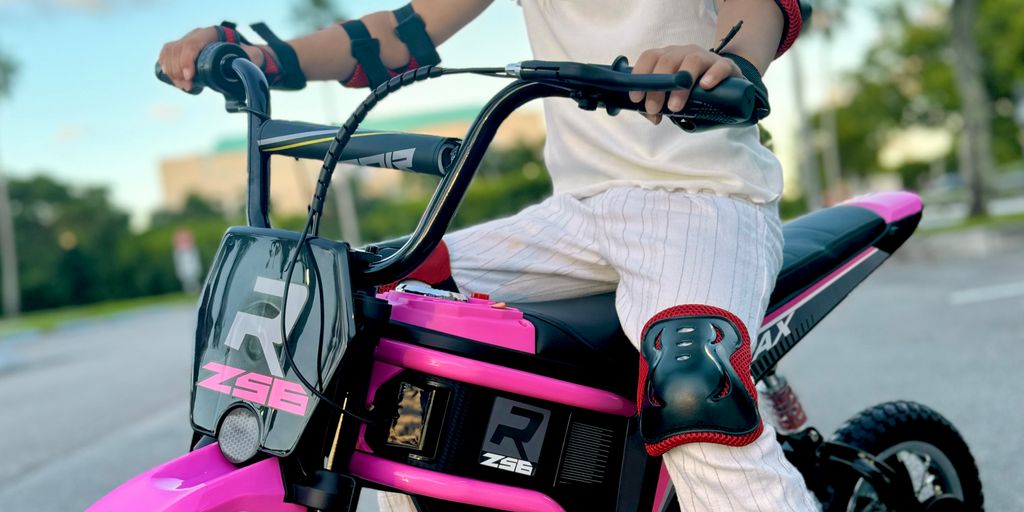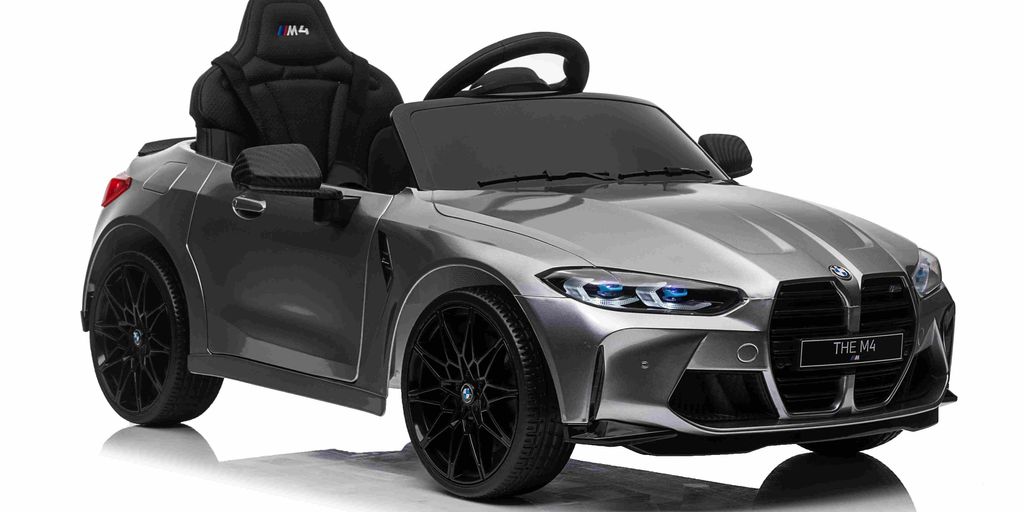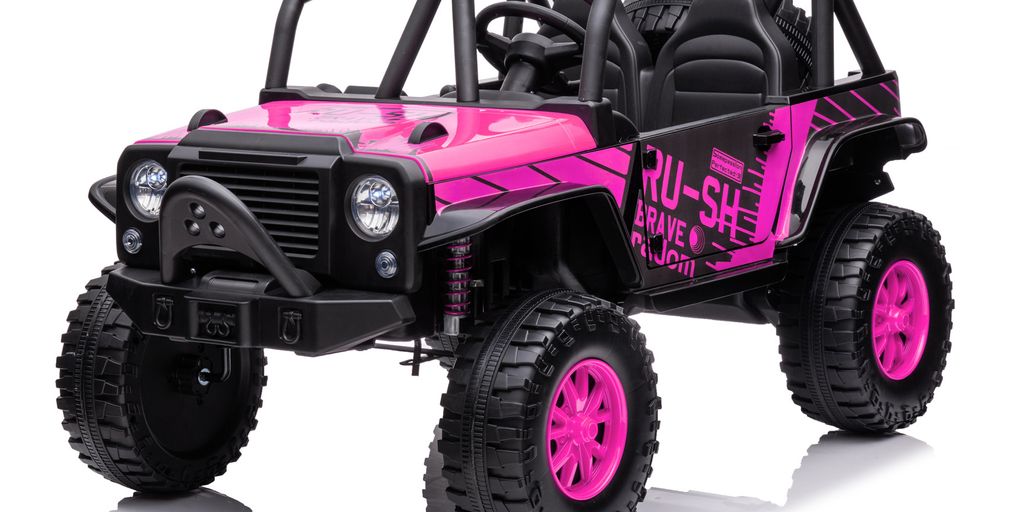Picking out a ride-on toy for kids who are 8 to 10 years old can feel like a big job. They're not little kids anymore, so you need something that's fun but also fits their age. We're talking about things like electric cars, go-karts, and even some cool scooters. This guide will help you figure out what to look for, especially if you're thinking about ride on toys for 8-10 year olds 24v. We'll cover everything from what your child likes to how much space you have.
Key Takeaways
- Think about what your child likes to do before you buy.
- 24V ride-on toys are often a good choice for this age group.
- Always check for good brakes and strong parts.
- Make sure you have enough room for the toy and for storing it.
- Reading what other parents say can really help you decide.
Considering Your Child's Interests and Personality
Choosing the right ride-on toy isn't just about the specs; it's about what makes your kid tick. What are they into? What kind of play do they enjoy most? Thinking about these things will help you find a ride-on that they'll actually love and use.
Matching the Ride-On to Their Play Style
Does your child love zooming around and feeling the wind in their hair? Or are they more into imaginative play, pretending to be a driver or explorer? Matching the ride-on to their play style is key. A speed demon might love a go-kart, while a budding adventurer might prefer an electric truck with room for "supplies". Consider their current favorite games and activities. Do they spend hours building forts? A ride-on with cargo space could be perfect. Are they obsessed with racing? A sleek scooter or bike might be the way to go. It's all about finding that sweet spot where their interests and the toy align. This helps ensure they'll actually use it and get the most enjoyment out of it. If you are having trouble accessing a website, it may be due to a security service blocking your access.
Encouraging Outdoor Exploration
Ride-on toys can be a fantastic way to get kids outside and active. Think about what kind of outdoor experiences your child enjoys. Do they love exploring nature trails, or are they more comfortable sticking to paved surfaces? A rugged ATV might be great for off-road adventures, while a scooter is perfect for sidewalks and bike paths. Consider these points:
- Durability: Can the ride-on handle the terrain your child will be exploring?
- Safety: Does it have features like speed control or sturdy brakes?
- Comfort: Is it comfortable for longer rides?
Getting kids outdoors is so important, and a ride-on toy can be a great motivator. It's not just about the toy itself, but about the adventures and memories they'll create while using it.
Fostering Creativity and Imagination
Some ride-on toys are more than just vehicles; they're tools for creative play. Look for options that allow your child to customize their experience. This could be anything from adding accessories to creating their own storylines. For example:
- An electric car with a working radio can become a mobile command center.
- A truck with a cargo bed can be used to haul imaginary supplies on a grand adventure.
- Even a simple scooter can be transformed into a superhero's mode of transportation with a little imagination.
Think about how the ride-on can spark their imagination and encourage them to create their own worlds and stories. The more opportunities for creative play, the more engaged they'll be with the toy.
Understanding Different Types of Ride-On Toys
Choosing the right ride-on toy involves knowing what's out there. There are so many options, and it can be hard to know where to start. Let's break down some popular choices for 8–10-year-olds.
Exploring Electric Cars and Trucks
Electric cars and trucks are a classic choice, and they've come a long way! These ride-ons often mimic real vehicles, offering a fun and realistic driving experience. They usually run on rechargeable batteries, making them convenient for repeated use. When looking at electric ride-ons, consider:
- The voltage of the battery (we'll talk more about that later).
- The number of seats (single or double rider).
- Any extra features like sound effects or working lights.
Discovering Go-Karts and ATVs
For kids who crave a bit more adventure, go-karts and ATVs can be a great fit. These ride-ons are typically designed for outdoor use and offer a more thrilling experience. ATVs, in particular, can handle slightly rougher terrain. Keep in mind:
- Go-karts are usually lower to the ground and focus on speed and handling.
- ATVs have a higher ground clearance and are built for off-road adventures.
- Both options often require more space to operate safely.
Considering Scooters and Bikes
Don't forget the classics! Scooters and bikes are excellent options for developing balance and coordination. They come in various styles and sizes to suit different skill levels. When choosing a scooter or bike:
- Consider the child's height and inseam for proper sizing.
- Look for adjustable handlebars and seats for a comfortable fit.
- Think about whether they prefer a traditional scooter, an electric scooter, or a bike with gears.
It's important to consider the child's skill level and experience when choosing a ride-on toy. Start with something manageable and gradually increase the challenge as they become more confident.
Prioritizing Safety Features and Durability
When you're picking out a ride-on toy, it's super important to think about how safe and sturdy it is. After all, you want something that will last and keep your kiddo safe while they're having fun. It's not just about the cool factor; it's about making sure they're protected.
Checking for Reliable Braking Systems
First off, brakes are a big deal. You want to make sure the ride-on toy has a braking system that actually works well. Check if the brakes are easy for your child to use and if they bring the toy to a stop quickly and smoothly. Foot brakes are common, but hand-operated brakes can be great too, depending on what your child is comfortable with. Give the brakes a test run yourself before letting your child loose.
Assessing Sturdy Construction Materials
Next, take a good look at what the ride-on toy is made of. Durable materials are key. You're looking for something that can handle bumps, scrapes, and general wear and tear. Plastic bodies should be thick and strong, and metal frames should be solid and rust-resistant. Read product descriptions carefully and see what other parents say about the toy's durability in reviews.
Ensuring Proper Weight Capacity
Finally, don't forget about the weight limit. It might seem obvious, but it's really important. Make sure the ride-on toy can handle your child's weight, with a little room to spare. Going over the weight limit can damage the toy and, more importantly, make it unsafe. Always check the manufacturer's specifications and stick to them. And hey, while you're at it, why not Follow Amped Ride on Toys on Instagram for more tips and tricks?
Safety is always the number one priority. Taking a few extra minutes to check these features can give you peace of mind and help your child have a blast without any unnecessary risks.
Evaluating Power and Performance for 8-10 Year Olds
When you're picking out a ride-on toy for an older kid, you can't just think about the cool factor. You've got to consider if it's actually got enough oomph to be fun and engaging for them. A sluggish ride-on will quickly lose their interest, but something too powerful could be unsafe. It's a balancing act!
Why 24V is Often the Sweet Spot
For kids in the 8-10 age range, 24V ride-on toys often hit that sweet spot. They provide a noticeable power boost compared to the 12V models that are more common for younger children. This extra power translates to better performance on varied terrains, like grass or slight inclines. Plus, it gives them a bit more speed, which is always a plus in this age group. However, it's important to always supervise and ensure they understand how to handle the increased power.
Understanding Speed Settings and Controls
Having multiple speed settings is a game-changer. It allows you to tailor the ride-on's performance to your child's skill level and the environment they're in. A low-speed setting is great for beginners or for navigating tight spaces, while a higher speed setting lets them open it up in a safe, open area. Look for models with easy-to-use controls that your child can quickly master.
Considering Battery Life and Charging
Nothing kills the fun faster than a dead battery. Think about how long your child will realistically want to play at a time and choose a ride-on with adequate battery life.
Here's a quick guide:
- Short Play Sessions (30-45 minutes): A standard battery should suffice.
- Moderate Play Sessions (45-90 minutes): Look for extended battery options.
- Long Play Sessions (90+ minutes): Consider models with swappable batteries or higher capacity options.
Also, check the charging time. Some batteries take forever to charge, which can be frustrating. Quick-charging options are a definite plus. Don't forget to read up on Cloudflare Ray ID if you encounter any issues while browsing for these toys.
It's also a good idea to establish a charging routine. Make it a habit to plug in the ride-on after each use, so it's always ready for the next adventure. This simple step can prevent a lot of disappointment and keep the fun rolling.
Thinking About Space and Storage
Okay, so you're almost ready to get that awesome ride-on toy. But hold up! Have you thought about where this thing is actually going to live? It's easy to get caught up in the excitement and forget that these toys can take up a surprising amount of room. Let's break it down.
Measuring Your Available Play Area
First things first: grab a measuring tape! Seriously, measure the space where your child will be using the ride-on toy most often. Is it the backyard? The driveway? The basement? Make sure there's enough room for them to maneuver safely without constantly bumping into things. Consider the turning radius of the toy, too. A tight corner in your hallway might be a no-go for a larger electric car.
Considering Indoor Versus Outdoor Use
Think about where the ride-on toy will be used most. Some are designed for smooth, indoor surfaces, while others are built to handle rougher outdoor terrain. If you're planning on using it both indoors and out, you'll want to choose a model that's versatile enough to handle both. Also, consider the noise level. A loud electric car might not be ideal for indoor use, especially if you have neighbors close by.
Easy Storage Solutions
Once playtime is over, where will the ride-on toy go? Do you have a garage, shed, or basement with enough space? If not, you might need to get creative. Here are a few ideas:
- Wall-mounted racks: Great for smaller scooters or bikes.
- Storage bins: Perfect for keeping batteries and chargers organized.
- Designated corner: Choose a spot in the garage or basement where the toy can be easily parked.
Don't underestimate the importance of easy storage. If it's a hassle to put away, the ride-on toy is more likely to end up cluttering your space. A good storage solution will help keep your home tidy and ensure that the toy is protected from the elements.
Also, think about how easy it is to move the toy. Can your child help put it away, or will you be stuck doing all the heavy lifting? A lighter model with sturdy construction materials might be a better choice if you're short on space or strength. Ultimately, the best ride-on toy is one that fits both your child's needs and your living situation.
Setting a Realistic Budget
It's easy to get carried away when you're shopping for fun stuff like ride-on toys! But before you start dreaming of all the cool features, it's smart to figure out how much you're really willing to spend. This helps you narrow down your choices and avoid any surprises later on.
What to Expect Price-Wise
Ride-on toys for 8-10 year olds can vary a lot in price. You'll find basic scooters for under $100, while fancier electric cars or go-karts can easily cost several hundred dollars, or even over a thousand for high-end models. The price usually depends on the type of toy, its features, the brand, and the quality of materials. Consider the long-term value, not just the initial cost.
Balancing Cost and Features
Think about which features are must-haves and which ones are just nice to have. Do you really need that built-in sound system, or would your child be just as happy with a simpler model? Sometimes, paying a bit more gets you better safety features or a more durable build, which can be worth it in the long run. Here's a quick list to consider:
- Safety Features: Brakes, seatbelts, sturdy frame.
- Performance: Speed, battery life, motor power.
- Durability: Material quality, warranty.
It's a good idea to make a list of the features that are most important to you and your child. Then, compare different models within your budget to see which one offers the best combination of features and value.
Looking for Value and Longevity
Instead of just going for the cheapest option, think about how long the toy will last and how well it will hold up to regular use. A well-made ride-on toy electric go-kart that can handle a bit of rough play is often a better investment than a cheaper one that might break down after a few months. Check for things like:
- Strong frame construction
- Durable tires
- Reliable motor and battery (if applicable)
- Good reviews about product lifespan
Reading Reviews and Seeking Recommendations
Choosing the perfect ride-on toy can feel overwhelming, but you don't have to do it alone! One of the smartest things you can do is tap into the collective wisdom of other parents. Their experiences can offer invaluable insights that you won't find in product descriptions.
Learning from Other Parents' Experiences
Online reviews are your friend! Pay close attention to what other parents are saying about the ride-on toys you're considering. Look beyond the star rating and read the actual comments. Do people mention the battery life not living up to expectations? Are there recurring complaints about the assembly process or the durability of certain parts? These real-world experiences can help you avoid potential headaches down the road. For example, some parents might highlight that the security service is essential for safe online shopping.
Identifying Top-Rated Models
While individual reviews are helpful, looking at overall ratings and rankings can also point you toward some top contenders. Sites like Amazon, Walmart, and Target often have customer review sections where you can sort products by average rating.
- Pay attention to the number of reviews a product has. A product with hundreds or thousands of reviews is generally more reliable than one with only a handful.
- Look for models that consistently receive high marks for both performance and durability.
- Don't be afraid to check out "best of" lists compiled by parenting magazines and websites. These lists often feature ride-on toys that have been thoroughly tested and vetted by experts.
Where to Find Reliable Information
Not all reviews are created equal. It's important to find sources you can trust. Here are a few places to look for reliable information:
- Major Retailer Websites: As mentioned above, sites like Amazon, Walmart, and Target have extensive customer review sections.
- Parenting Blogs and Websites: Many parenting blogs and websites offer in-depth reviews of ride-on toys, often written by parents who have actually used the products with their own children.
- Consumer Reports: If you're a member, Consumer Reports often tests and rates a variety of products, including ride-on toys.
Remember to take all reviews with a grain of salt. Some reviews may be biased or fake. Look for patterns and consistent themes across multiple reviews to get a more accurate picture of a product's strengths and weaknesses.
Want to know what others think before you buy? Reading reviews and getting advice from friends can really help. We've got tons of honest reviews and great tips to help you pick the best stuff. Check out our website today to see what everyone's talking about!
Wrapping It Up
So, there you have it! Picking out a ride-on toy for your 8-10 year old doesn't have to be a huge headache. Just remember to think about what they like, what's safe, and what fits your budget. It's all about finding that perfect match that'll get them outside and having a blast. Happy riding!
Frequently Asked Questions
What's the best voltage for a ride-on toy for an 8-10 year old?
For kids aged 8-10, a 24-volt ride-on toy is usually the best choice. It gives them enough power for fun adventures without being too fast or hard to handle. Plus, it's a good step up from slower toys they might have used when they were younger.
How does space at home affect what ride-on toy I should buy?
You should totally think about how much room you have at home. If you're short on space, a smaller scooter or a foldable bike might be a better fit than a big electric truck. Also, think about where your child will mostly play – indoors or outdoors – to pick a toy that works well in that area.
What are the most important safety features to look for?
Safety is super important! Always check for good brakes that stop the toy quickly. Look for strong, tough materials that won't break easily, and make sure the toy can safely hold your child's weight. Reading reviews from other parents can also help you find out if a toy is really safe and built to last.
Is it important to consider my child's interests when picking a ride-on toy?
Definitely! Choosing a ride-on toy that matches what your child likes to do can make it way more fun for them. If they love pretending to be a race car driver, a go-kart is perfect. If they're more into exploring, an ATV or an electric truck could be awesome. It helps them use their imagination and encourages them to play outside.
How much should I expect to spend on a ride-on toy for this age group?
The price of ride-on toys can really change a lot. You can find simpler ones for a couple hundred dollars, or super fancy ones that cost a lot more. It's smart to set a budget first. Remember, sometimes spending a little more upfront for better quality means the toy will last longer and be safer, giving you more for your money in the long run.
Should I read reviews before buying a ride-on toy?
Yes, reading reviews from other parents is a fantastic idea! They can give you real-world insights into how the toy performs, if it's durable, and if kids actually enjoy it. Look for reviews on trusted websites or ask friends and family for their recommendations. This helps you avoid toys that might look good but don't hold up in real life.




Leave a comment
This site is protected by hCaptcha and the hCaptcha Privacy Policy and Terms of Service apply.